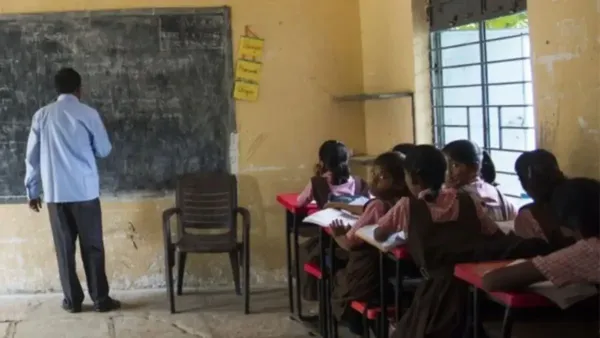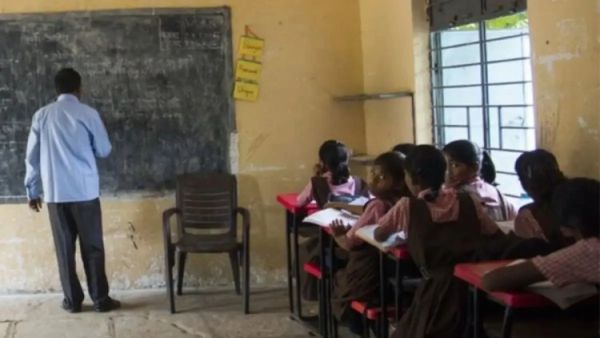
In a significant reform, the administration of US President Donald Trump is thinking of combining the US International Aid Agency (USAID) into the State Department, which would reduce its staff and align its expenditures with Trump’s “America First” agenda. Trump has put the initiative in the hands of Elon Musk, the entrepreneur who is leading his campaign to reduce the size of the federal government.

Trump said on Sunday that USAID had “been run by a bunch of radical lunatics, and we’re getting them out,” while Musk referred to it as “a criminal organization” without offering any proof and declared that it was “time for it to die.”
How is USAID financed, and what is it?
In order to better coordinate international aid, which was already a crucial component of US foreign policy in thwarting Soviet influence, Democratic President John F. Kennedy founded USAID in 1961 at the height of the Cold War. It now oversees around 60% of US foreign aid, and in fiscal 2023, it distributed USD 43.79 billion. Its 10,000 employees, of whom about two-thirds are working abroad, helped around 130 nations, according to a Congressional Research Service study released this month.
Congress provides funding for USAID in response to requests from the administration. The CRS stated that USAID supports “strategically important countries and countries in conflict; leads US efforts to alleviate poverty, disease, and humanitarian need; and assists US commercial interests by supporting developing countries’ economic growth and building countries capacity to participate in world trade.” In 2023, Ukraine, Ethiopia, Jordan, Congo, Somalia, Yemen, Afghanistan, Nigeria, South Sudan, and Syria were the countries that received the most help.
What is the US assistance budget, and how does it stack up?
The United States provided USD 72 billion in help globally in fiscal 2023, accounting for almost 42% of all UN-tracking humanitarian aid in 2024. The funding addressed everything from HIV/AIDS treatment, energy security, access to clean water, anti-corruption efforts, and women’s health in war areas. A September analysis from the Brookings Institution states that US assistance expenditure has been around 0.33 percent of GDP in previous years. With the Marshall Plan effort to reconstruct Europe after World War Two, it reached its highest point in the 1950s at 3% of GDP.
USAID has been managed by whom?
Samantha Power, an Irish-American diplomat and self-described optimist who was the UN ambassador under Barack Obama, oversaw USAID under former President Joe Biden. Under its March 2023 Policy Framework, addressing the climate catastrophe, halting the rise of authoritarianism, and advancing equitable opportunity and inclusive economic development were its main goals. Power emphasized USAID’s role in showcasing US soft power in an interview last month. Using the initials of China’s official name, the People’s Republic of China, she said, “The surge in PRC-backed and Russian-backed propaganda maligning USAID and our work around the world is the best testament to USAID’s contribution.”
Will it affect Indian operations?
The Times of India reported that USAID has instructed its partners operating in India to halt all ongoing initiatives in the nation. “The recipient shall not resume work under this agreement until notification has been received in writing from the Agreement Officer (USAID) that this award suspension has been cancelled,” according to the instruction.
When India turned down US funding
The government has lessened its reliance on American funding for more than ten years, despite the agency’s more than 70 years of active activity in India and its crucial contribution in reducing a number of fatal illnesses. When India was struck by a terrible tsunami in 2004, the US offered rescue assistance, but the government headed by Prime Minister Manmohan Singh refused to accept them.
Officials from the Indian government claim that the US assistance included restrictions that eventually hurt the country’s interests.
Does the US provide funding to India for HIV programs?
Yes, via the United States Agency for International Development (USAID), the United States gives money to India for HIV initiatives. The National AIDS Control Plan (NACP) is supported by USAID in collaboration with the Indian government. However, the Indian government has covered a large portion of the costs.
According to the most current India HIV Estimates 2023 study, there are more than 2.5 million HIV-positive individuals in India; nevertheless, the adult HIV prevalence is just 0.2%, and an estimated 66,400 new HIV infections occur each year. Since 2010, the yearly number of new HIV infections has dropped by 44%, surpassing the worldwide decline rate of 39%.
Union Minister of State for Health and Family Welfare Anupriya Singh Patel reiterated India’s commitment to meeting the Sustainable Development Goal (SDG) of the UN to eradicate HIV/AIDS as a public health issue by 2030 while speaking at an event in New Delhi. The Minister gave an overview of India’s progress and main tactics in the continuous battle against HIV/AIDS, including the Government of India’s fully financed fifth phase of the National AIDS and STD Control Programme (2021–2026).
function in the field of education
According to NDTV, USAID is actively collaborating with government instructors in 16 states to enhance their proficiency in nine languages. Additionally, the organization has been helping over two million kids by promoting the literacy initiative Padhe Bharat Badhe Bharat (Read India, Progress India).